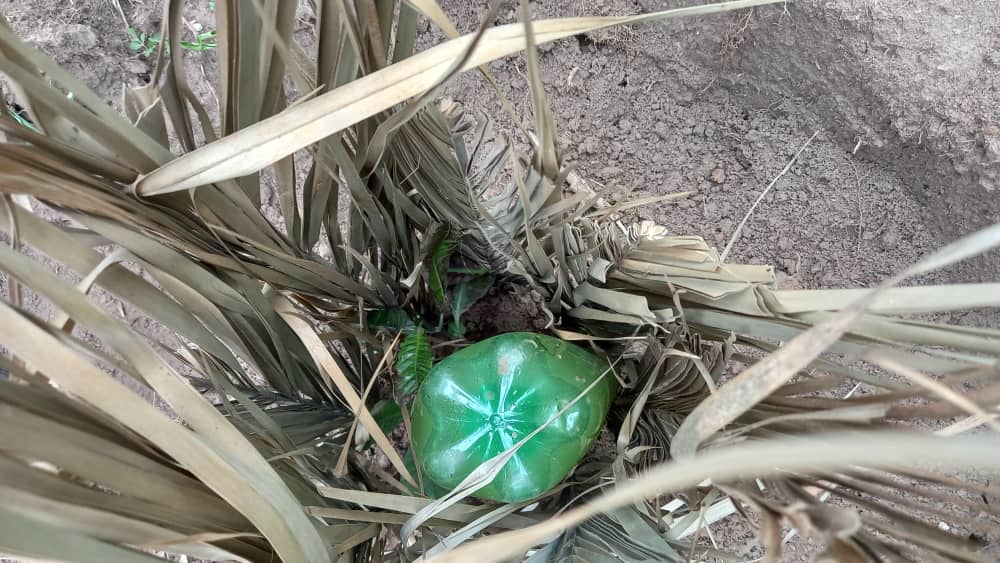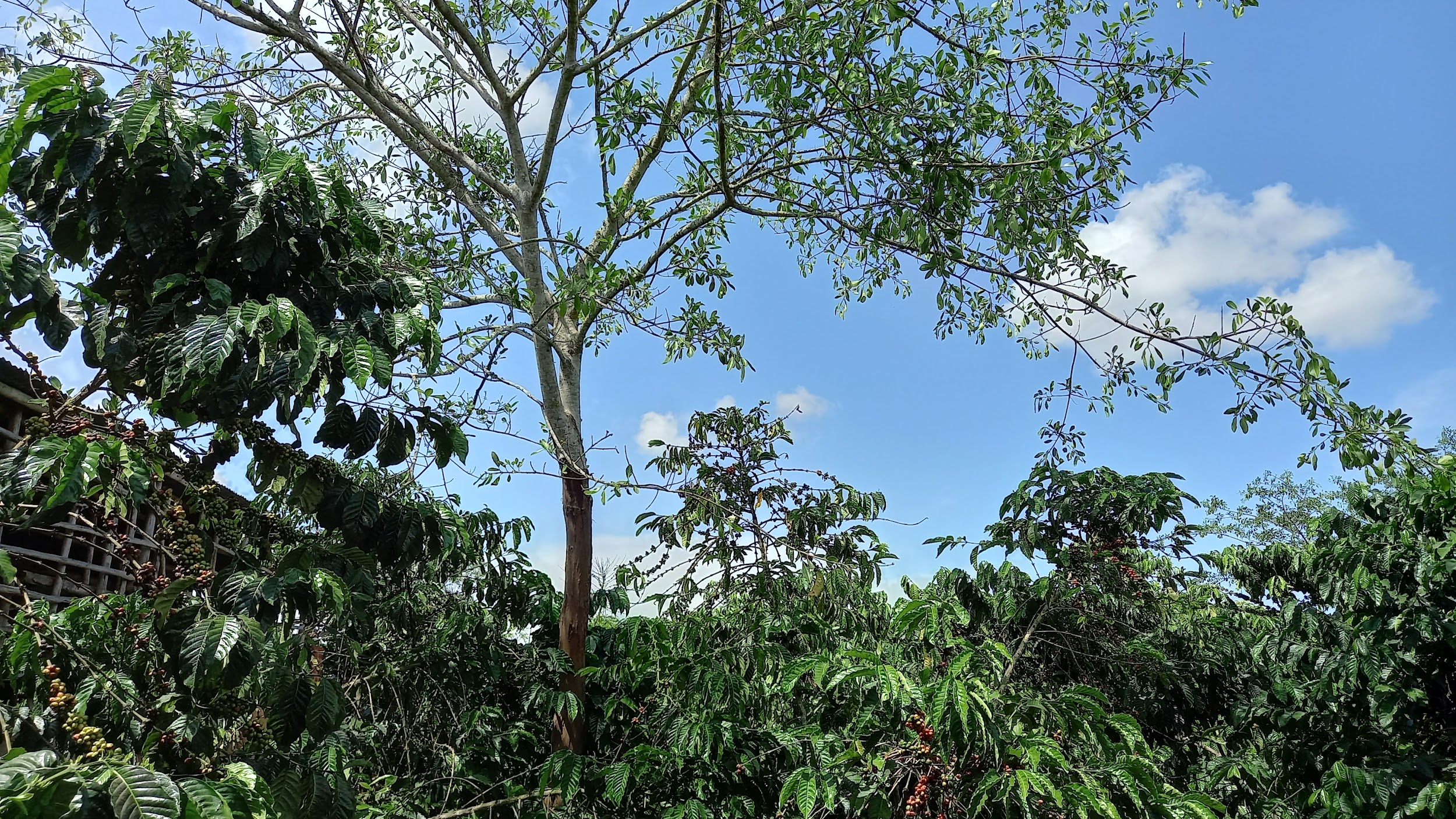Coffee Farmers Build Resilience to Climate Change in Uganda
Posted on
Coffee fields in Uganda are drying over the past three decades. Annual temperatures have risen across the country, potential evapotranspiration increased, and the distribution of precipitation has become more variable. In order to reduce vulnerability to climate change, smallholder farmers are applying innovative approaches to manage climate change.
The different mitigation programs with indigenous knowledge
Bottle irrigation. Farmers get empty mineral water bottles preferably 1.5 liter bottle, make a hole from the bottle top, fasten it after filling the bottle with water and it gets lowered in the soil to release water in a drip irrigation way.

Fig. 1: A coffee seedling under bottle irrigation, surrounded by palm tree leaves
Rainwater harvesting. This is through water harvesting bands such as digging pits/ troughs and terraces. Tarpaulins are laid in the dug pits and water is kept on them for a while.The common terracing method is "Fanya Juu '' which involves placing the soil on the upslope and "Fanya Chini '' which involves placing of the soil on the lower side of the contour.

Fig 2: Tarpaulin laid in a dug pit to store water for a while; it is under a tree to reduce evaporation
De-suckering. This is a type of pruning where numerous shoots that grow from laterals, verticals and tertiaries are removed from coffee trees. This is done to avoid over competition from many suckers, open up canopy, and enhance productivity and to achieve less pest incidences.

Fig 3: Mr. Ronald, a farmer from Kabonera Division, Masaka City doing de-suckering in his field
Shade trees. The devastating climate changes have clearly shown the importance of tree shades. Different agro ecological zones have recommended shade tree species. For the case of robusta coffee in central region, they include; ficus natalensis (mutuba), albizia coriaria (mugavu) and ficus mucuso (mukunyu) planted at a spacing of 15X15 meters with intense pruning for optimal shade.
Mr. Ronald, a coffee farmer says recommends trees with much sap which are less affected by the black coffee twig borers.

Fig 4: Using ficus natalensis as a shade tree
Mulching and cover crops. Some farmers cover a meter away from the plant with a foot width of mulch in order to maintain a conducive soil condition and temperature.

Fig 5: Mulching in a banana-Coffee growing system
Farmer's mitigation practices are diverse, based on their knowledge and financial ability as well as the crops grown. PlantVillage with partners is developing different interventions and scientific solutions to support indigenous knowledge needed by farmers.
Reference
https://www.sciencedirect.com/sdfe/reader/pii/S2212096316300821/pdf
Written By; Richard Ssekamatte